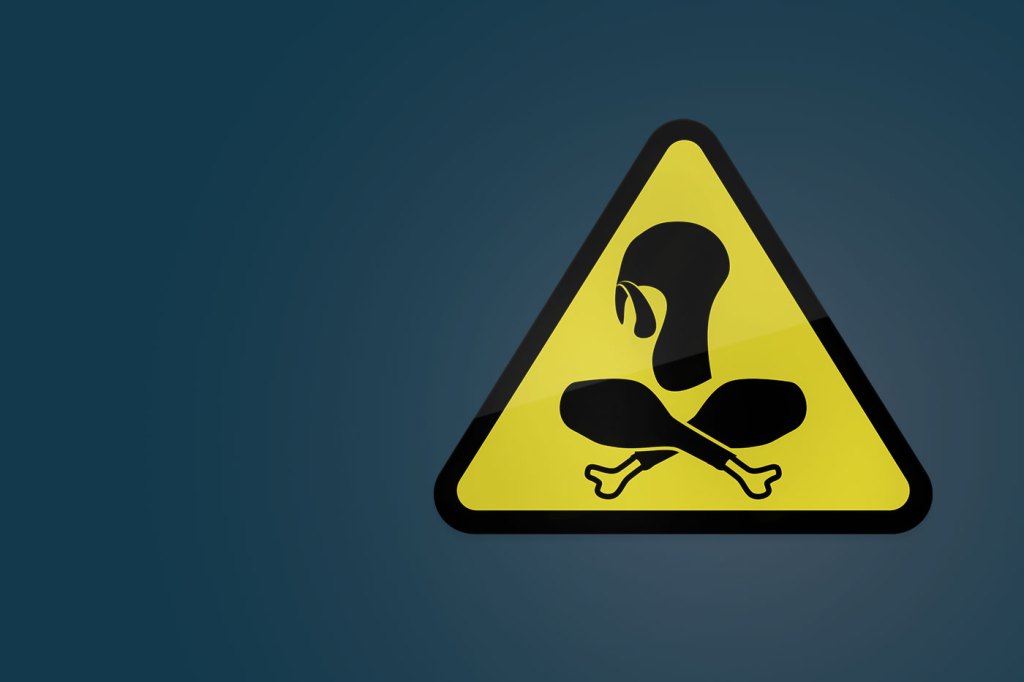Six safety tips to avoid salmonella this Thanksgiving

You risk getting sick if you’ve already purchased a Thanksgiving turkey contaminated by salmonella but haven’t started to thaw the frozen bird, said Darin Detwiler, an assistant teaching professor of food policy at Northeastern.
“The timeline for infection has already started for people who may have purchased a contaminated turkey,” said Detwiler, who works with the United States Department of Agriculture to strengthen food safety policies in consumer education and product labeling. “Preparing a Thanksgiving meal is like playing Russian roulette. There are so many opportunities for things to go wrong.”

Darin Detwiler
Earlier this month, Jennie-O Turkey recalled more than 90,000 pounds of ground turkey found to be associated with a nationwide outbreak of salmonella.
The salmonella outbreak started over a year ago. Linked to raw turkey in both human and pet food products, the bacteria spread to 35 states, making 64 people sick and sending 63 to the hospital. One person in California died.
The Centers for Disease Control and Prevention estimates that salmonella causes about 1.2 million illnesses, 23,000 hospitalizations, and 450 deaths in the United States every year.
Most people infected with salmonella experience diarrhea, fever, and stomach cramps 12 to 72 hours after being exposed to the bacteria. The illness usually lasts from four to seven days, and most people recover without medical treatment. But young children and adults older than 65, frequent guests around the Thanksgiving table, are more likely to develop severe symptoms.
“Thanksgiving is a holiday to take home photos and memories, not hospital bills and woes,” said Detwiler.
Here are six safety tips to avoid foodborne illnesses this Thanksgiving:
Thaw your turkey
Frozen turkeys need several days to defrost in the refrigerator — be sure your refrigerator temperature is set at 40 F or cooler. You’ll need to allow about 24 hours for every 4 to 5 pounds of frozen turkey you plan to thaw in the fridge.
But do not wash your turkey
“It’s been clinically proven that washing raw turkey can spread harmful pathogens in the kitchen,” Detwiler said. “The only way to kill bacteria such as salmonella that causes foodborne illnesses is to fully cook the turkey.”
Avoid cross-contamination
Use separate cutting boards, plates, and utensils when handling raw turkey to avoid transferring bacteria from one object to another. Wash items that have touched raw meat with soap and warm water, or place them directly in the dishwasher. Keep raw turkey separate from all other foods at all times.
Cook your turkey thoroughly
The CDC recommends that you cook your turkey until its internal temperature reaches 165 F. Check the turkey’s temperature by inserting a food thermometer in three places: the thickest part of the breast, the innermost part of the thigh, and the innermost part of the wing.
Wash your hands
“Person-to-person exposure can be as harmful as eating contaminated foods,” Detwiler said. “Make sure to wash your hands with soap and warm water for 20 seconds before touching any food to prevent the spread of infection.”
Refrigerate leftovers
Refrigerate leftovers in shallow containers within two hours of cooking to prevent bacteria from growing. Never store stuffing inside a leftover turkey and avoid eating leftovers that have been in the refrigerator for longer than three or four days. If you plan on storing leftovers for longer periods of time or transporting them (we’re looking at you, college students), use the freezer or ice packs.





